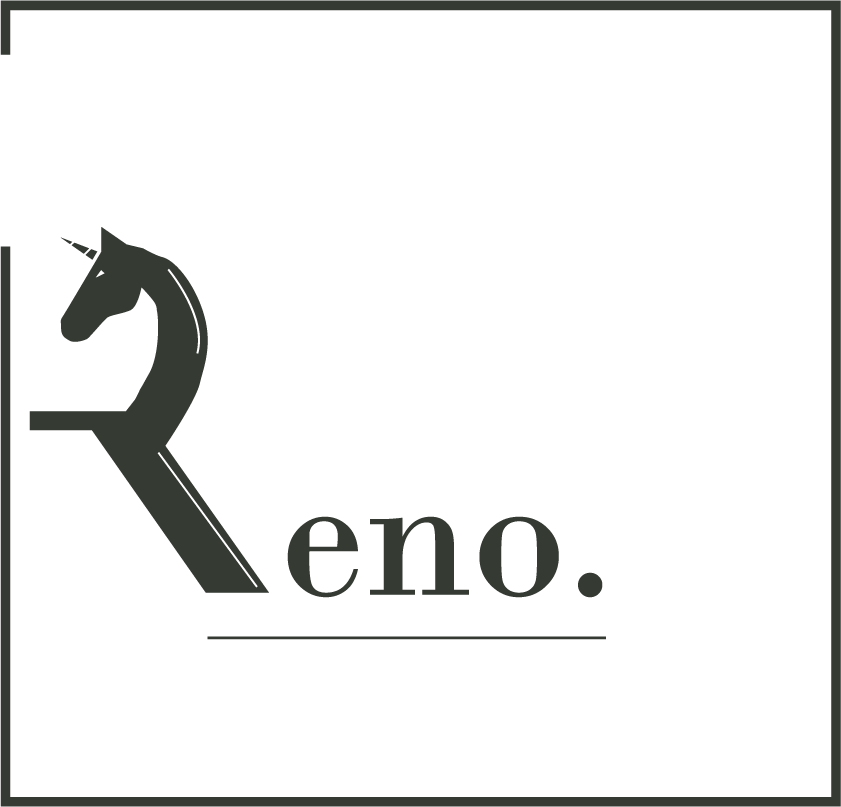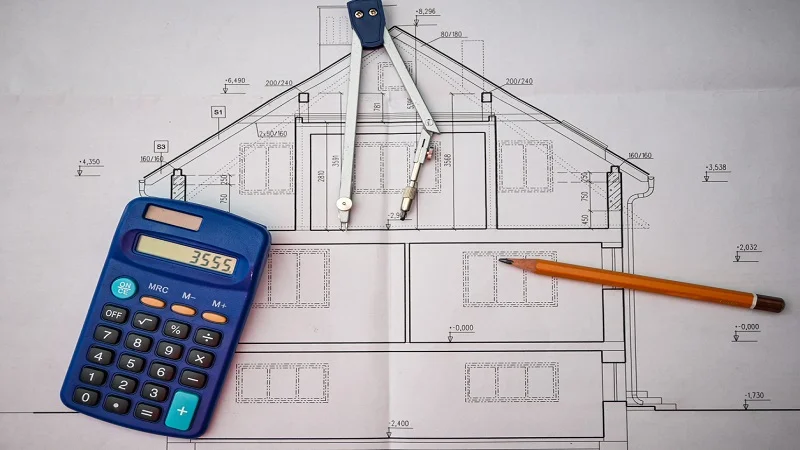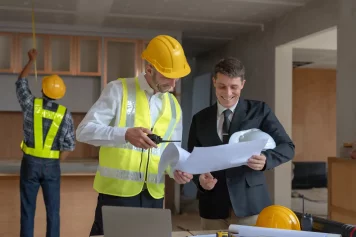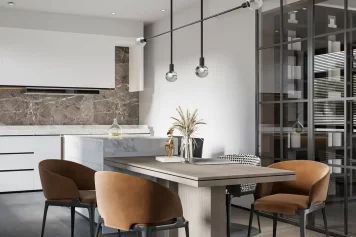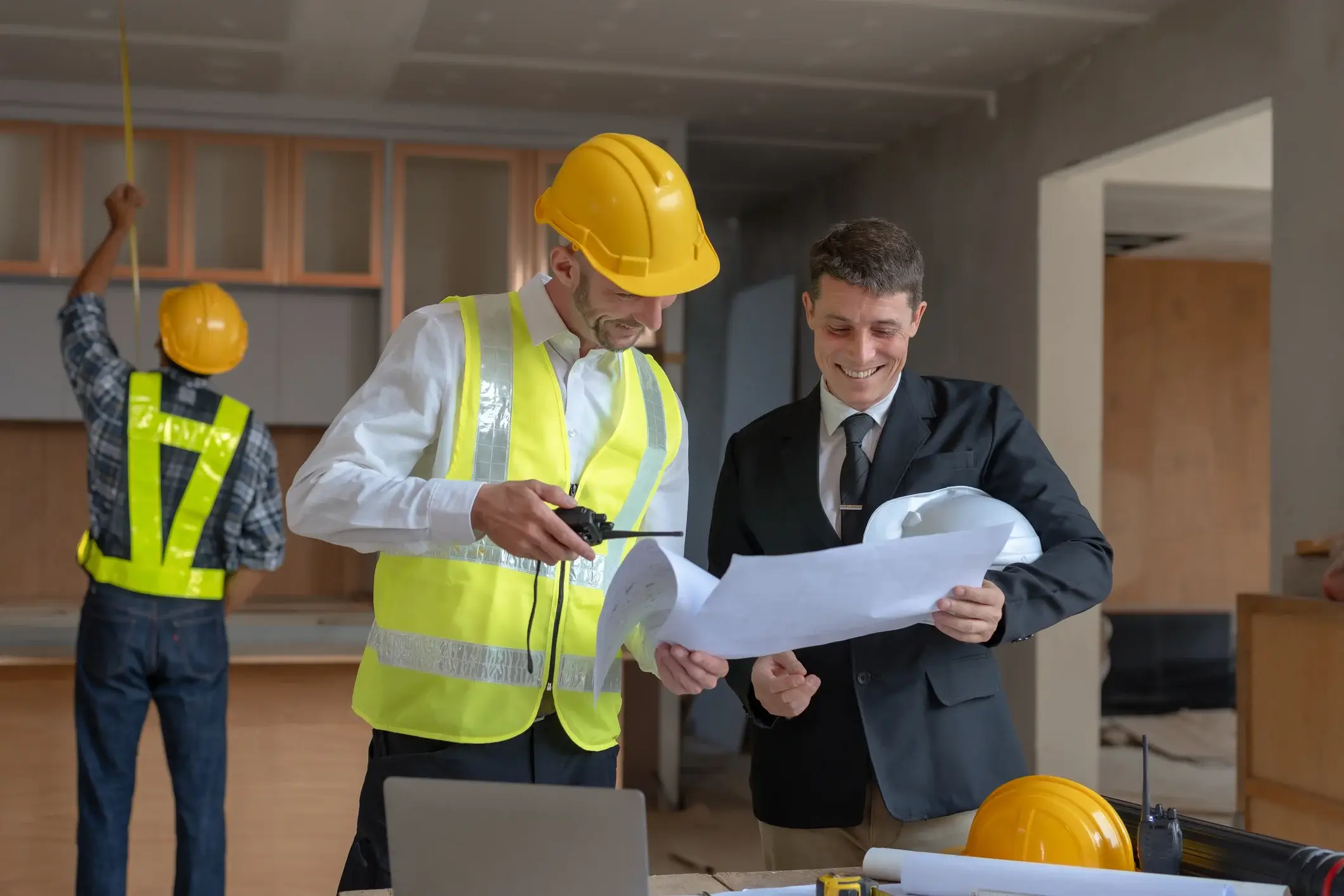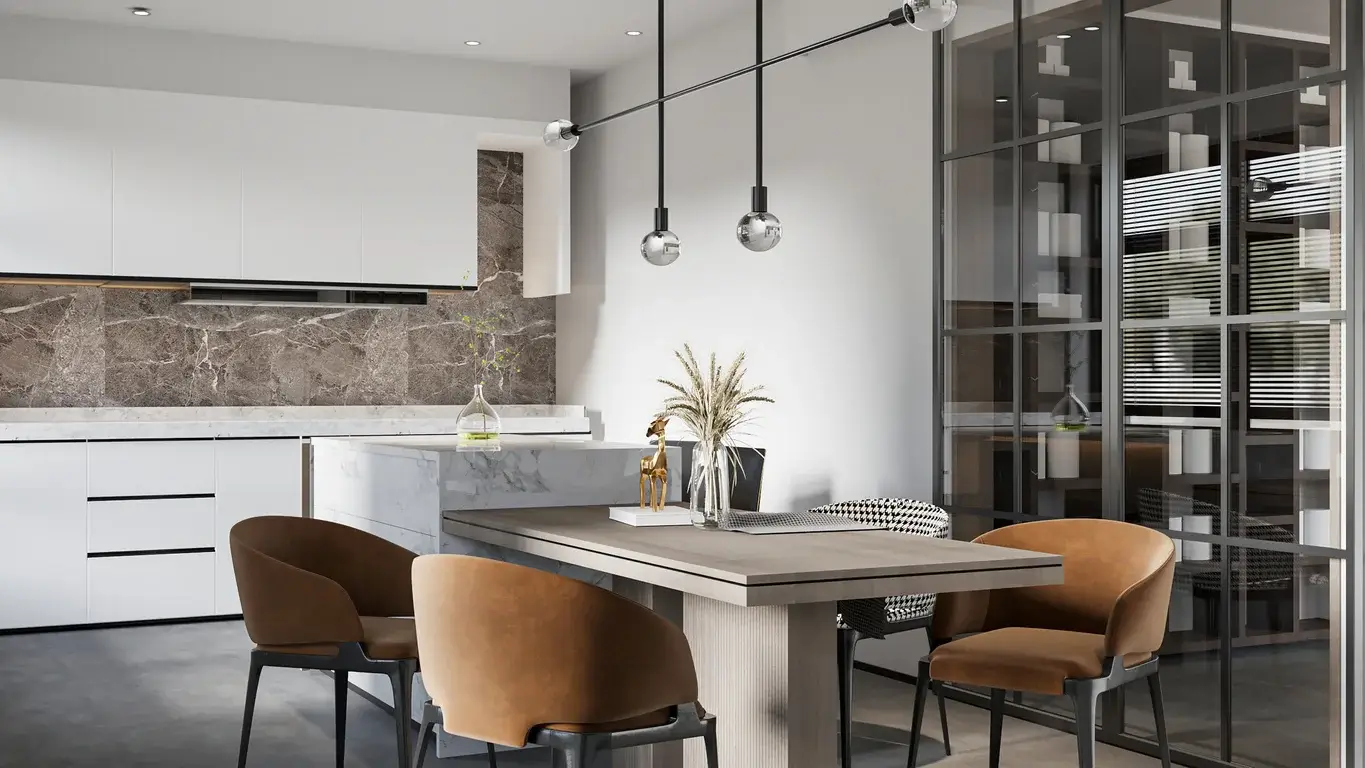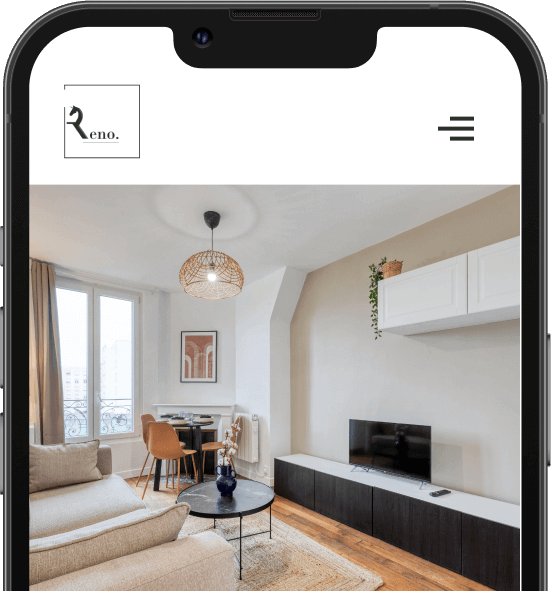In 2025, renovating house is more important than ever. This is true for homeowners looking to modernize their homes and those seeking to improve their homes’ energy performance. With rising material and labor price, planning a renovation requires careful anticipation of expenses.
On the one hand, new environmental regulations impose stricter standards. This impacts the choices and costs of renovation work . On the other hand, rising raw material prices lead to higher expenses related to materials and labor. Furthermore, changing energy standards are pushing homeowners to invest more to improve the thermal performance of their homes, which further increases the overall budget.
Knowing the average price per square meter for a renovation allows you to better structure your project and avoid unpleasant surprises. Each type of renovation—light, intermediate, or major—involves variable costs depending on several factors. These factors include the initial condition of the home, the complexity of the work, the geographic location, and the choice of materials. A good estimate of the price per square meter helps define a realistic budget. Furthermore, this estimate allows you to optimize your renovation choices based on your priorities and needs.
This article aims to provide a detailed estimate of the average renovation cost per square meter in 2025. You’ll also discover the various factors influencing prices and the differences depending on the type of work. Next, learn about the financing solutions available to reduce the overall cost of your renovations.
Les critères déterminant la variation du prix de rénovation d’une maison
If you’re considering a house renovation, several factors directly influence the cost of the work. These factors must be taken into account to establish a realistic budget and avoid unpleasant surprises. Proper planning helps optimize costs. Additionally, you’ll anticipate potential constraints related to the construction site, materials, or energy and insulation requirements.
Les matériaux de construction et les innovations technologiques
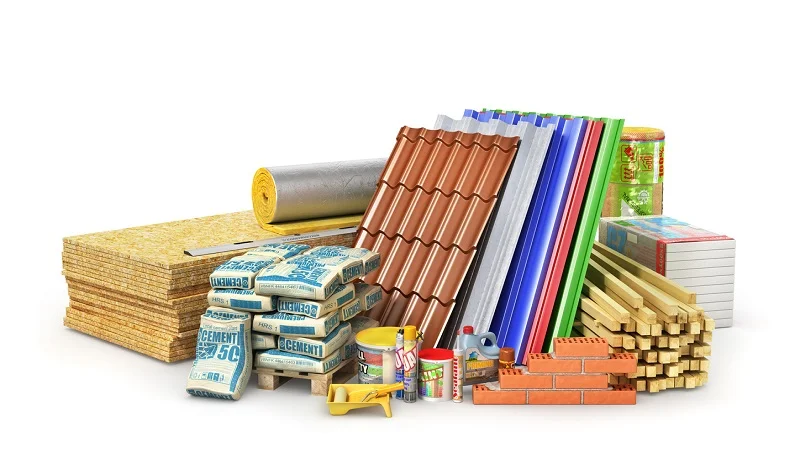
The choice of materials plays a fundamental role in the budget for a home renovation. Innovative and sustainable materials, such as cross-laminated timber (CLT), hemp fiber insulation, and foam concrete, offer enhanced thermal insulation, acoustic performance, and resistance to mold and mildew. These materials, while more expensive to purchase, can save significant money on heating, electricity, and water bills by improving the energy efficiency of your home.
At the same time, integrating advanced technologies such as home automation, connected electrical systems, and voice control can increase the initial cost of the renovations. However, these innovations optimize energy management and improve home comfort, thus justifying their installation and higher price.
Les obligations écologiques et les normes de performance énergétique
In 2025, environmental regulations and energy standards will have a significant impact on the cost of renovations. These standards encourage the use of bio-sourced materials and natural insulation. These can increase your budget by 10 to 20%. Breathable mineral paints, certified sustainable wood, and natural fiber insulation are some examples of materials that comply with these regulations.
While these bonds may increase the initial cost, they nevertheless guarantee better energy performance and qualify for various financial aids. These subsidies help reduce the overall cost of the work while ensuring effective insulation of windows, walls, floors, and roofs.
L'impact de la zone géographique et des facteurs économiques locaux
The cost of a home renovation varies greatly depending on the region and the location of the project. In large cities and high-demand areas, the cost of materials tends to be higher due to competition and resource scarcity. Plumbing, electrical, and labor costs also increase. In fact, demand often exceeds available supply. This is due to competition among professionals and resource scarcity.
Conversely, in rural areas, the cost of work may be more affordable. However, access to materials and skilled tradespeople may be more difficult, increasing the cost of the project. Furthermore, local economic conditions, such as unemployment rates and average wages, also influence labor costs. This is particularly the case for architects, plumbers, and electricians.
La surface à rénover
The cost of a renovation is generally expressed per square meter, but the larger the surface area to be renovated, the lower the price per square meter can be. For the construction of a 5-meter partition wall, the price can be as high as €200/m². However, for a 50-meter wall, it can drop to €190/m² due to the economies of scale achieved by the company in charge of the work.
This logic also applies to rooms like the kitchen and bathroom. The more extensive the renovation, the more likely it is to negotiate preferential quotes for labor and materials.
L’accès au chantier
The location of the construction site can generate additional costs related to logistics. In a city center, parking fees, material transportation, and installation constraints can impact the budget. Similarly, the accessibility of older buildings can complicate the installation of new cladding, heating systems, and electrical systems.
Conversely, a construction site on the outskirts may be easier to access, but may require travel and delivery costs for materials. This includes plumbing, painting, and even window and roof installation.
Le choix des matériaux et des équipements
The choice of materials and equipment directly influences the cost of the renovation. An electrical switch can range from a few euros to several dozen euros. Furthermore, high-end wall or floor coverings can triple the initial budget.
Homeowners must therefore assess their needs and choose materials that fit their budget. One solution is to negotiate quotes from several professionals and take advantage of financial assistance to reduce the cost of the work.
Faire appel à un professionnel et bénéficier des aides à la rénovation
Using a certified RGE (Recognized Environmental Guarantor) professional is essential to obtain financial assistance for home renovations . These schemes can significantly reduce the cost of the work:
- MaPrimeRénov’
- CEE premiums
- the zero-rate eco-loan (eco-PTZ)
- property tax exemptions
However, it’s essential to have the work carried out by qualified professionals and to submit the necessary documents before construction begins. Specialized organizations or architects like Reno can assist homeowners throughout their project. They can help you optimize your budget and maximize savings on your building renovation.
La rénovation d’une maison : prix au m² selon le type de travaux
The cost of a home renovation varies depending on the type of work undertaken and the extent of the changes required. Depending on the condition of the home, budget, and project objectives, homeowners can opt for a simple refresh, a partial renovation, a complete renovation, or even a major renovation. Costs can range from €250/m² for a basic refresh to €2,000/m² for structural work requiring the intervention of an architect.
La rénovation légère : un simple rafraîchissement (250 à 500 €/m²)
A light renovation is ideal for modernizing the interior of a home without affecting its structure. This type of work primarily involves painting walls and ceilings, renovating floors, and making minor decorative adjustments. For example, removing wallpaper costs between €5 and €10/m², while renovating damaged walls can range from €25 to €50/m² depending on the condition of the surfaces.
Additionally, installing new flooring, whether parquet, tile, or vinyl, costs between €20 and €250/m² depending on the quality of the materials chosen. While this renovation remains affordable, it allows you to give your home a fresh look without any complex work.
La rénovation partielle : une modernisation ciblée (400 à 800 €/m²)
When more extensive work is required, a partial renovation may be considered. This is particularly true for modernizing the kitchen or bathroom, as well as updating the electrical and plumbing systems.
Thus, the complete renovation of a small bathroom, with a surface area of less than 6 m², generally costs between €4,000 and €8,000. For a medium-sized bathroom, between 6 and 9 m², the budget varies between €6,000 and €12,000. Similarly, modernizing a kitchen depends on the choice of materials, the replacement of furniture and household appliances. This directly influences the final cost of the work.
In addition to renovating these rooms, the demolition of non-load-bearing partitions optimizes the distribution of spaces and improves lighting. With a price ranging from €400 to €800/m², this type of project represents a good compromise between aesthetic refreshment and improved home comfort.
La rénovation complète : logement de 500 à 1 100 €/m²)
A complete renovation involves completely redoing the interior design of the home. This type of work includes reorganizing spaces, upgrading electrical and plumbing systems, and replacing windows to improve thermal and acoustic insulation.
During this type of project, it is common to completely renovate the kitchen and bathroom, create new partitions, or modernize the heating system. While the involvement of an architect is not mandatory, it may be recommended if the project involves significant changes to the interior layout.
The cost of a complete renovation ranges from €500 to €1,100/m², which represents a significant investment, but which can significantly increase the value of the property.
La rénovation lourde pour la mise aux normes (1 100 à 2 000 €/m²)
When an old building requires a complete upgrade, major renovations become essential. This type of work includes major structural modifications such as roof frame repairs, which can cost between €80 and €180/m², as well as the installation of a new floor, which costs between €20 and €40/m².
Furthermore, a roof renovation can cost between €40 and €200/m², while improving thermal insulation generally costs between €40 and €110/m², depending on the materials selected. In some cases, it may be necessary to modify or reinforce load-bearing walls, which requires the services of an architect and specialist craftsmen, thus increasing the overall budget.
With a cost of between €1,100 and €2,000/m², a major renovation represents a significant investment, but it allows for a lasting improvement in the comfort and energy performance of the house.
Comparatif des prix selon le type de rénovation
Type of renovation | Average price per m² |
Simple refreshment | 250 to 500 €/m² |
Partial renovation | 400 to 800 €/m² |
Complete renovation | 500 to 1,100 €/m² |
Major renovation | 1,100 to 2,000 €/m² |
Le financement de votre rénovation de maison
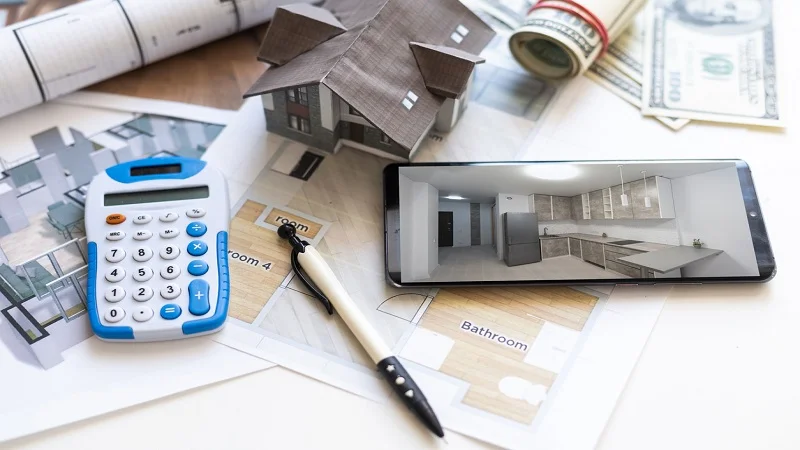
Carrying out a home renovation represents a significant investment. It is often necessary to resort to appropriate financing solutions. Several options exist to finance your renovation work , ranging from bank loans to public schemes, including alternatives such as crowdfunding. Each solution has its advantages and specificities. This allows each homeowner to adapt the financing according to the scope of the project, the budget, and the renovation objectives.
Les prêts bancaires pour financer vos travaux de rénovation
One of the most common ways to finance a home renovation is to take out a bank loan. There are several types of loans available, each tailored to specific needs.
Le prêt immobilier dédié : une solution pour les grandes rénovations
A mortgage loan is a particularly attractive option for financing major renovations. Its main advantage is that its interest rate is generally lower than that of consumer loans. Furthermore, repayment terms are flexible, with terms tailored to the scope of the project and available budget.
For example, if your renovation project aims to improve the energy performance of your home, some banks allow you to extend the repayment period and access specific tax incentives. However, before taking out a mortgage, it’s essential to compare bank offers, studying interest rates, repayment terms, and any additional fees. Using online comparison tools can be a good way to identify the most advantageous offer.
Le crédit à la consommation : une option pour des travaux abordables
For partial renovations or smaller projects, consumer credit is an attractive alternative. This type of loan carries a higher interest rate but offers considerable flexibility. Unlike a mortgage, it is an unsecured loan. This means the borrower is not required to provide quotes or invoices justifying the use of the funds. This freedom allows homeowners to adjust their renovation budget without administrative constraints.
However, it is recommended to carefully assess the total cost of interest before taking out a consumer loan. Monthly payments can be higher than those of a traditional mortgage.
Le financement participatif et les prêts entre particuliers
Aside from traditional banking solutions, there are alternatives that allow you to finance a home renovation in more original ways. Among these, crowdfunding and peer-to-peer lending are increasingly popular.
Le crowdfunding : une nouvelle manière de financer ses travaux
Crowdfunding is also known as participatory financing. It offers individuals the opportunity to raise funds from a community through specialized online platforms. This method is particularly suited to eco-friendly renovation projects. In fact, it allows for the mobilization of an audience sensitive to environmental issues.
Additionally, some platforms offer crowdlending, where individual investors lend money in exchange for an attractive interest rate. This can be an attractive alternative for those who don’t want to go through traditional banks.
Les prêts entre particuliers : une solution rapide et accessible
Peer-to-peer lending is another option for financing a home renovation without going through a bank. Platforms connect borrowers and lenders. Interest rates are competitive, with flexible repayment terms.
However, this solution is quick and often less restrictive than bank loans. However, it can carry certain risks. It’s important to carefully research the loan’s terms, especially any potential fees and specific repayment clauses.
Les dispositifs et aides financières pour alléger le coût des travaux
On the one hand, bank loans and alternative financing options offer solutions for financing home renovations. On the other hand, there are public programs specifically designed to encourage energy renovations and home improvements. These grants can significantly reduce the cost of the work, provided certain eligibility conditions are met.
L’éco-prêt à taux zéro (éco-PTZ)
The French government has introduced the zero-interest eco-loan (eco-PTZ) to encourage homeowners to undertake energy-efficient improvement work. This scheme allows you to borrow up to €50,000, interest-free, to finance projects such as :
- Thermal insulation of walls, roof and floors;
- Replacing windows to improve energy performance;
- Installing a more efficient heating system, such as a heat pump or a high-efficiency boiler.
However, to be eligible for this eco-loan, it is imperative that the work be carried out by a professional certified RGE (Recognized Environmental Guarantor) and that it comply with current environmental standards.
Les subventions de l’Anah : une aide pour les ménages modestes
The National Housing Agency (ANAH) also offers grants to homeowners wishing to carry out renovations to their homes. These grants are primarily intended for low-income households and can cover a significant portion of the renovation budget.
Anah subsidies include:
- Work to improve insulation and heating;
- Adapting housing for people with reduced mobility;
- Bringing electrical and plumbing installations up to standard.
To benefit from this aid, it is necessary to submit an application to Anah and ensure that the work meets energy performance requirements.
In 2025, home renovations are a significant investment. This type of investment is influenced by rising material and labor costs, as well as evolving energy standards. The price per square meter varies depending on the condition of the home, the type of work, and the location. This can range from €250/m² for a simple renovation to €2,000/m² for a major renovation.
Financing a renovation requires careful planning. There are several options available to optimize your budget, such as bank loans, consumer credit, and more.
Thorough preparation includes assessing needs, comparing quotes, and choosing the right financing. This is essential for successfully completing your renovation project and managing costs.
